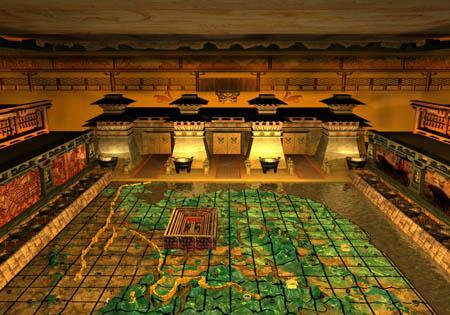China's terracotta tomb site hides mystery building
(Reuters)Updated: 2007-07-01 14:48
BEIJING - The tomb of China's first emperor, guarded for more than 2,000 years by 8,000 terracotta warriors and horses, has yielded up another archaeological secret.
 An artist's impression of the underground mausoleum of Emperor Qinshihuang. (file)  |
After five years of research, archaeologists have confirmed that a 30-metre-high building is buried in the vast mausoleum of Emperor Qinshihuang near the former capital, Xian, in the northwestern province of Shaanxi, Xinhua news agency said on Sunday.
Duan Qingbo, a researcher with Shaanxi Institute of Archaeology, said the building might have been constructed for the soul of the emperor to depart.
Archaeologists have been using remote sensing technology since 2002 to study the internal structure of the unexcavated mausoleum.
They concluded that the building, buried above the main tomb, had four surrounding stair-like walls with nine steps each, Xinhua said.
Qinshihuang unified China in 221 BC.
The life-size terracotta army, buried in pits near the mausoleum to guard the emperor in the afterlife, was accidentally unearthed in 1974 by farmers who were digging a well.
|
||
|
||
|
|